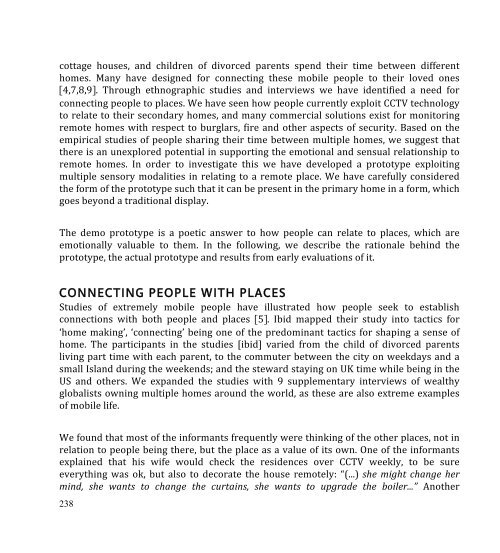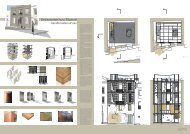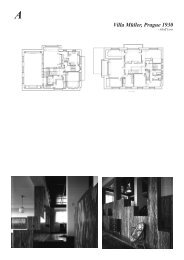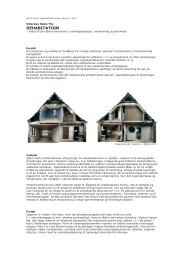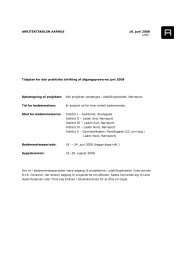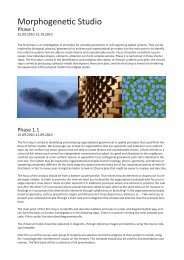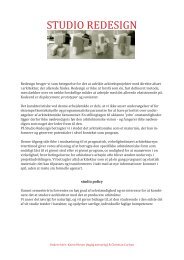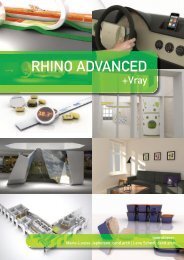- Page 1 and 2:
-Tactics and Concepts for Highly Mo
- Page 3 and 4:
Manuscript for PhD dissertation By
- Page 5 and 6:
Empirical findings from the studies
- Page 7 and 8:
Resultaterne fra de empiriske studi
- Page 9 and 10:
wish you both the best of luck. Als
- Page 11 and 12:
4. Methodology.....................
- Page 13 and 14:
Papers 1: Pushing Firm Boundaries t
- Page 15 and 16:
investigated mobility as a design f
- Page 17 and 18:
of homing interactions. This is fou
- Page 19 and 20:
Other submitted and peer-‐revie
- Page 21 and 22:
indications towards a rise in mobil
- Page 23 and 24:
proposals for future areas of servi
- Page 25 and 26:
6 ”I have built a large undergrou
- Page 27 and 28:
8 “If you work hard you can play
- Page 29 and 30:
10 “So this weekend in Beverly Hi
- Page 31 and 32:
1.4.1. Open Innovation Recent resea
- Page 33 and 34:
the research community. The company
- Page 35 and 36:
One can say that the new concept id
- Page 37 and 38:
2. Related Work In this chapter I u
- Page 39 and 40:
invest ourselves in the places of t
- Page 41 and 42:
solid platform. Home is a safe plac
- Page 43 and 44:
A summary of the characteristics of
- Page 45 and 46:
Harvey claims that Heidegger could
- Page 47 and 48:
think it is ignoring the fact that
- Page 49 and 50:
is where the theories about space t
- Page 51 and 52:
2. Home (as an idea) is more comple
- Page 53 and 54:
are not collocated, but remotely in
- Page 55 and 56:
inspiration from specific marginal
- Page 57 and 58:
to music, but it is the first thing
- Page 59 and 60:
There are some examples of communic
- Page 61 and 62:
42 Figure 4: Tactics for Homing
- Page 63 and 64:
while one is away from the physical
- Page 65 and 66:
lives whereas Doubling concerns the
- Page 67 and 68:
support different means for establi
- Page 69 and 70:
4. Methodology The research in this
- Page 71 and 72:
I use the terminology from Koskinen
- Page 73 and 74:
method in her dissertation (Winther
- Page 75 and 76:
The interview guide was then constr
- Page 77 and 78:
Redström (Redström, 2006) argue t
- Page 79 and 80:
artifacts. Ehn refers to thinging i
- Page 81 and 82:
Other workshops were mostly concern
- Page 83 and 84:
64 5. Ethnographic findings about H
- Page 85 and 86:
5.2. People in the study This chapt
- Page 87 and 88:
68 Doubling is duplicating things b
- Page 89 and 90:
Territorializing is not always thin
- Page 91 and 92:
Another informant receives 9 phone
- Page 93 and 94:
5.3.3. Artifacting Artifacting is w
- Page 95 and 96:
The sense of home is experienced th
- Page 97 and 98:
78 privacy like that, it’s fine,
- Page 99 and 100:
5.3.5. Differentiating Differentiat
- Page 101 and 102:
82 “So you feel like, even though
- Page 103 and 104:
84 again. We know this brand is goo
- Page 105 and 106:
elation to workout. He has a certai
- Page 107 and 108:
By chance we interviewed another st
- Page 109 and 110:
Feeling at home is established by k
- Page 111 and 112:
From a technology design perspectiv
- Page 113 and 114:
steward, who has a flat and a wife
- Page 115 and 116:
The prototype (see Figure 11: HiT P
- Page 117 and 118:
does not however provide instant co
- Page 119 and 120:
Published as: Lynggaard, A. B., Pet
- Page 121 and 122:
some sounds that they did not immed
- Page 123 and 124:
I aim to build a concept that suppo
- Page 125 and 126:
106 • Offline: Makes it possible
- Page 127 and 128:
The prototype supports a shared med
- Page 129 and 130:
identified through a prototype that
- Page 131 and 132:
sharing at the same time merge clos
- Page 133 and 134:
channels, however. They weren’t s
- Page 135 and 136:
The main finding here is that ML ca
- Page 137 and 138:
Ambient Live Connection, where it w
- Page 139 and 140:
picture. The concept in the first s
- Page 141 and 142:
122 • Sharing: Makes it possible
- Page 143 and 144:
hidden magnets inside the bowl. The
- Page 145 and 146:
it possible to move the magnet and
- Page 147 and 148:
6.4. Summary of the experiments The
- Page 149 and 150:
7. Reflections Having come to the e
- Page 151 and 152:
dialogue in this case does not need
- Page 153 and 154:
The design experiments were carried
- Page 155 and 156:
7.1. Summary The reflections in the
- Page 157 and 158:
138 Figure 25: Homing Interactions
- Page 159 and 160:
meeting the needs of their core cus
- Page 161 and 162:
products at Bang & Olufsen appeal t
- Page 163 and 164:
Bell, G., Blythe, M., & Sengers, P.
- Page 165 and 166:
Chesbrough, H. W., Vanhaverbeke, W.
- Page 167 and 168:
Edwards, S., & Petten, V. V. (2011)
- Page 169 and 170:
Heidegger, M. (2000). Sproget og or
- Page 171 and 172:
Kvale, S. (1996). InterViews : An i
- Page 173 and 174:
Muller, M. J., & Kuhn, S. (1993). P
- Page 175 and 176:
Petersen, M. G., Lynggaard, A. B.,
- Page 177 and 178:
Romero, N., Markopoulos, P., Baren,
- Page 179 and 180:
Tsujita, H., Siio, I., & Tsukada, K
- Page 181 and 182:
Zimmerman, J., Stolterman, E., & Fo
- Page 183 and 184:
INTRODUCTION Recent research has sh
- Page 185 and 186:
in the specific firms. As Pisano &
- Page 187 and 188:
Center consisting of partners from
- Page 189 and 190:
very mobile lifestyle with multiple
- Page 191 and 192:
creating an app for the apple platf
- Page 193 and 194:
ACKNOWLEDGMENTS Thank you to the Ad
- Page 195 and 196:
Introduction “I had a dream and I
- Page 197 and 198:
have argued that even imagining ext
- Page 199 and 200:
180 which we call the primary home.
- Page 201 and 202:
turn the cinema system on. This hig
- Page 203 and 204:
The fully automated home of Alexand
- Page 205 and 206: design of domestic technologies [2]
- Page 207 and 208: [9] Edwards, K. E. and Grinter. R.
- Page 209 and 210: Keywords Home, ethnography, design,
- Page 211 and 212: place. One can feel at home in an i
- Page 213 and 214: space is transformed into a home [1
- Page 215 and 216: We meet Steven in London, and follo
- Page 217 and 218: London, another in Copenhagen and t
- Page 219 and 220: 200 Q: I noticed last time that the
- Page 221 and 222: 202 Figure 3: Wayne bubbling in his
- Page 223 and 224: A: No, it is, no it is always ready
- Page 225 and 226: In addition Steven has inserted a n
- Page 227 and 228: This way of homing is in line with
- Page 229 and 230: Along these lines, Wayne sticks to
- Page 231 and 232: ipod, loudspeakers, wires and a ric
- Page 233 and 234: 8. CONCLUSION In this paper we poin
- Page 235 and 236: [22] Thau, C. (2000). Beboelse (Inh
- Page 237 and 238: The potential for Digital Picture F
- Page 239 and 240: The Whereabouts clock [3] conveys c
- Page 241 and 242: Designing the frame The aim was to
- Page 243 and 244: Fig. 3 Sending an image from the mo
- Page 245 and 246: The Journey Experiment We conducted
- Page 247 and 248: website (Jane and later Bent) 228 S
- Page 249 and 250: that they were diving, I searched f
- Page 251 and 252: straightforward and gave the sense
- Page 253 and 254: suggest that HOMEinTOUCH is an answ
- Page 255: 13. Sellen, A., Harper, R., Eardley
- Page 259 and 260: The ‘reproducing part’ is a 65
- Page 261 and 262: DISCUSSION At this point we conclud


